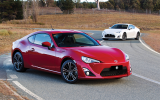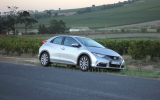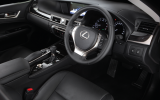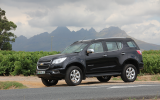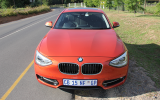- Magazine
- #readityourway
- Weekly Stories
- #shareyourstory
-
Adventure
- Abroad Travelling
- Africa Travelling
- Events
- Expos & Shows
- Festivals
- Fishing
- Free Diving
- Gliding
- Horse Riding
- Inspiring People
- Islands Travelling
- Kite/Windsurfing
- Motorbiking
- Motorised Water Sports
- Mountaineering
- Mountain Biking
- Off-road 4x4
- Off-road Motorbiking
- Paddling
- Performance Driving
- Photography
- Rock Climbing
- Rollerblading
- Sailing
- Scuba Diving
- Skateboarding
- Skydiving
- Snowboarding & Skiing
- Surfing
- Swimming
- Trail Running
- Wakeboarding
- Waveski Surfing
-
Sport
- Adventure Racing
- Fishing
- Free Diving
- Gliding
- Health & Fitness
- Horse Riding
- Inspiring People
- Kite/Windsurfing
- MMA
- Motorbiking
- Mountain Biking
- Multi-sport
- Off-road 4x4
- Off-road Motorbiking
- Paddling
- Performance Driving
- Photography
- Road Cycling
- Road Running
- Rock Climbing
- Rollerblading
- Sailing
- Scuba Diving
- Skateboarding
- Skydiving
- Snowboarding & Skiing
- Surfing
- Swimming
- Rugby
- Trail Running
- Triathlon
- Wakeboarding
- Waveski Surfing
- Lifestyle
- Calendar
In Pursuit of Driving Pleasure: Jaguar XKR, Range Rover Evoque Si4 Automatic (4WD) & Opel Meriva 1.4T Cosmo
Words & Photos: Francois Steyn - drivethis.wordpress.com
Topic:
Vehicle Reviews
Jaguar XKR: Before I start I want to say something I can probably only say once, because it’s true: The Jaguar XKR is the most beautiful car in production today. Okay, an Aston Martin might be as good or a bit better looking, then again it was designed by the same person, on the same piece of paper. But you just don’t find that long bonnet, curvy hips and perfectly balanced silhouette on supercars costing double or more.
Inside the good looks are complemented by fully adjustable leather seats. By fully I mean you can shape the seat to your body like clay. Even the wings on the sides can be ordered to hug you and keep you in position when cornering wildly. The dashboard, door panels, and steering wheel are also covered in leather, while the pillars and roof lining are soft-touch suede.

Okay, so the XKR is a pleasant place to be in, but depress the pulsating stop/start button and the 5-litre V8 masterpiece of an engine comes to life. Without touching the accelerator, the rev-needle blips to 2 000 r/min just to let the neighbours know that you’re out in your Jag. Thanks to a supercharger in the R-version I drove, power output is a massive 375 kW and torque 625 Nm. The XKR only comes with a six-speed automatic gearbox, but there’s no gear lever. Instead, a turn dial rises up from the centre console when you start the engine. Turn it to D and off you go. You have the option to manually shift via the paddles behind the steering wheel, but the automatic works so well you never need to. What impressed me most was that when you shifted to S mode with the gear knob, the gears are held for longer before upshifting and downshift aggressively under hard braking. You can choose a lower power output for slippery conditions by pressing a button behind the gear knob or increase throttle response with another.
Apart from the amazing performance (0 - 100 km/h in 4.8 seconds and a limited top speed of 250 km/h, which can be raised to 280 with the Speed Pack, and 300 in the XKR-S), the handling is just right.
You can steer this 4.8-metre, nearly two-ton monster with telepathy, and you would have thought that with 20-inch rims and low-profile tyres you’d feel every white line on the road, but you don’t. The ride is so supple that you feel as if you’re in a boat, but turn in sharply and you know immediately where the road is.
This is not just a fast car. It has all the features a modern luxury sedan should have. The boot takes 330-litres and if you use the rear seats, in which no adult will be able to sit for more than a minute, you have more than enough space for your weekend-away luggage. Climate control, a great sound system, and SatNav keeps you cool, entertained, and driving in the right direction, and the adaptive cruise control keeps the desired following distance you dialled in. As I anticipated there is not much I can fault this car on, but if I had to point out something it would be that the rain sensing wipers did not do a better job than I could have done, and I only got 18 l/100 km on my first tank. On the next tank I got 15. Close to 10 is possible, but only if you have the restraint of a nun. For around R1.3 million this is still a bargain, and apart from the much more expensive Aston you won’t get a car as good looking as the XKR.
Range Rover Evoque Si4 Automatic (4WD)
Say what you like about the Evoque being a poser or a party planner’s car, you can't deny its good looks and with 177 kW under the hood, it’ll go on to do 217 km/h. And it has settings for snow, mud, rocks and sand. That’s not all though. It has the most exciting feature I’ve ever seen on any car so far: when you unlock the doors via the remote at night, a light under the mirror illuminates a search-light-like circle on the ground next to the car with a shadow outline of the Evoque’s body. I mean, how cool is that? Imagine the designers sitting around the Tata boardroom table suggesting this and then imagine the bigwigs saying: “We like it, let’s do it!”
Then there’s the interior. A lot of the switch-gear is shared with the Jaguar, from the gear knob to the stop/start button. The rain sensing wipers work and there is more than enough leather in here too. The seats are comfortable for all four passengers and you can still fit 575-litres of luggage in the boot if it’s in liquid form. Even though the rear window is on the small side you don’t feel cramped thanks to the fixed panoramic roof with power blind.
Propelling a 1 670 kg SUV with a little 2-litre petrol turbo engine might sound silly, but once the revs rise above 1 750 r/min, peak torque of 340 Nm is at your disposal. Doing 180 km/h it is still not out of breath and unfazed by a light side wind. The six-speed automatic gearbox is responsive when you step on it and in S-mode even more so. You also have the shift paddles behind the steering wheel as in the XKR. The Terrain Response works like the system found in the Freelander, adjusting the suspension and ride height. When in the Adaptive Dynamics mode the system detects off-road terrain and optimises the advanced MagneRide damper settings to give the best balance of comfort and handling. Dynamic mode can also be selected from this knob and provides for better on-road handling and less body roll. Even though the Evoque does not have low range, the Hill Descent Control can be used to maintain crawling speeds down steep inclines.
Needless to say it’s got all the safety features and most of the mod cons, including a satellite navigation system that did not have the road between the N7 and Hopefield on it.
Luckily, the turning circle is only 11.3 metres and I could make a quick, almost-legal U-turn to get back on track. Starting at R591 700 it does not really qualify as a ‘budget’ Range Rover and is right in the price range of the stunning X3 xDrive35i with that award-winning straight six. Just remember that the Evoque returned 8 l/100 km and the BMW 8 km/l (12.5 l/100 km), and the Evoque is so much better looking. After all, isn’t that what's important when buying a 4x4 these days?
Opel Meriva 1.4T Cosmo
Not the most beautiful car in this month’s issue I must admit, but certainly interesting. The oddly-shaped side windows and shoulder line give it a quirky appearance, but inside you can see and feel that it's part of the Astra family. That is a good thing, as today’s Opels come standard with almost everything that you pay extra for on a VW. Really, the list is quite impressive. There are automatic levelling halogen headlamps with control intelligent high beam, a panoramic roof, climate control, rain-sensing wipers, and up to 32 storage possibilities. But best of all is that everything actually works. On my first day in the Meriva I had to make an urgent phone call. With the new law in the Western Cape kidnapping your phone for 24 hours when you are caught (a law I support by the way), I pressed the phone button on the radio and started giving voice demands as requested by the German-sounding lady. I kid you not, with the first attempt I got it right and there is no voice dialling programmed on my phone.
The next test was taking the in-laws, who were visiting from China, on a wine tour while officially photographing the Franschhoek Uncorked Festival. We visited 19 wine farms in two days, and this is where the Meriva proved to be perfect. The rear doors open to the rear (yes, it has suicide doors) and this takes some getting used to at first, with the driver and right rear passenger trying to step out onto the same spot each time. After a while you get used to it and the wine-thirsty passengers knew it was time to stop 'tasting' when they couldn’t get into the car anymore. Having to rush from cellar to cellar called for a lot of wine being consumed on the go (not the driver I must add), but luckily the rear occupants had Kulula-style tray tables, complete with holes perfect for a tasting glass.
Even though the passengers complained about a bumpy ride once or twice, no wine was spilt on the trip and the nippy 1.4 turbo petrol did well to get us from point A though S over the weekend. At first I thought it to be a 1.6 turbo, thanks to a healthy 103 kW and 200 Nm of torque. Winding up the motor and shifting rapidly though the slick six-speed manual reminded me that this practical little MPV (the boot takes up to 920-litres with the seats folded flat) was still an Opel at heart.
To conclude, it is a lot of car for R256 500.
Issue:
Issue 20 Dec '12
Contributor:
Francois Steyn
Related content
|
|
|
|
|
|
|
|
|
|




